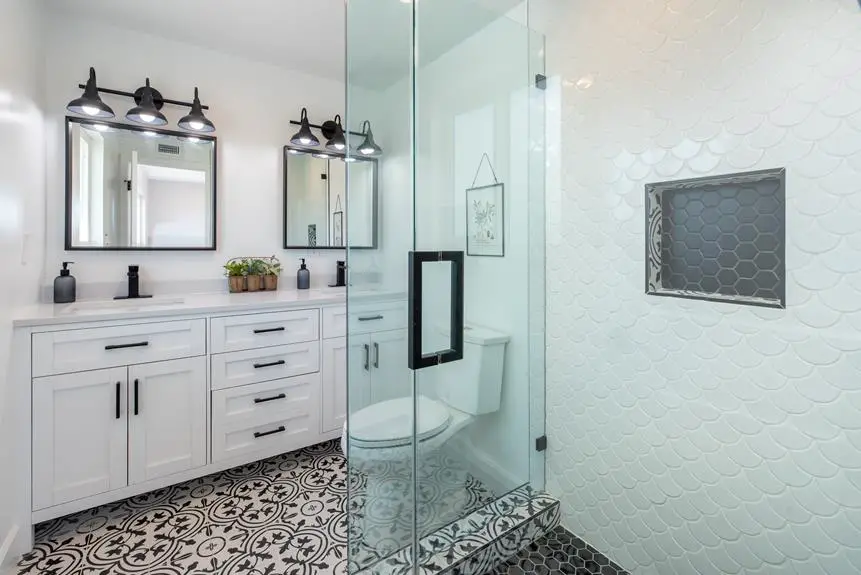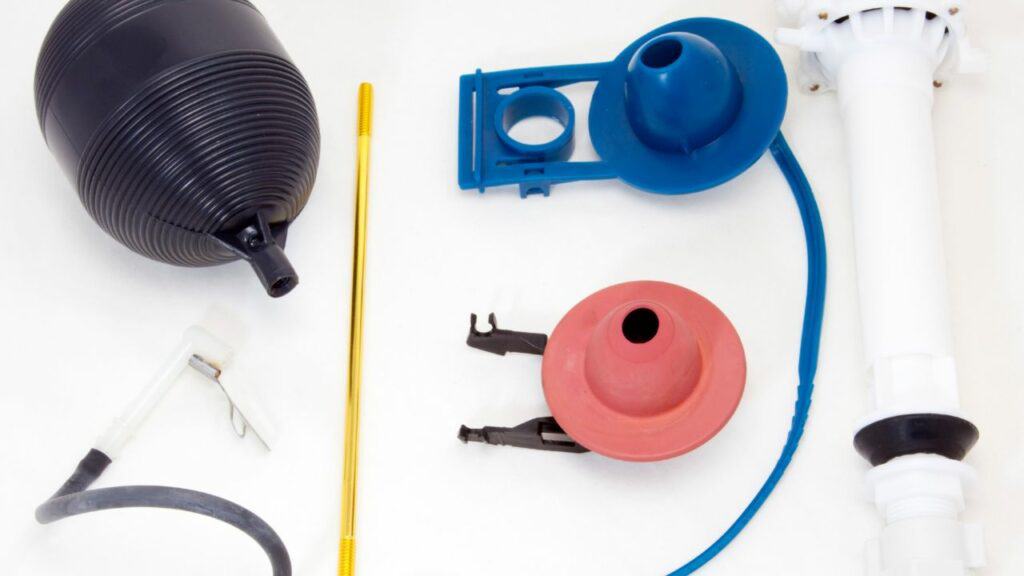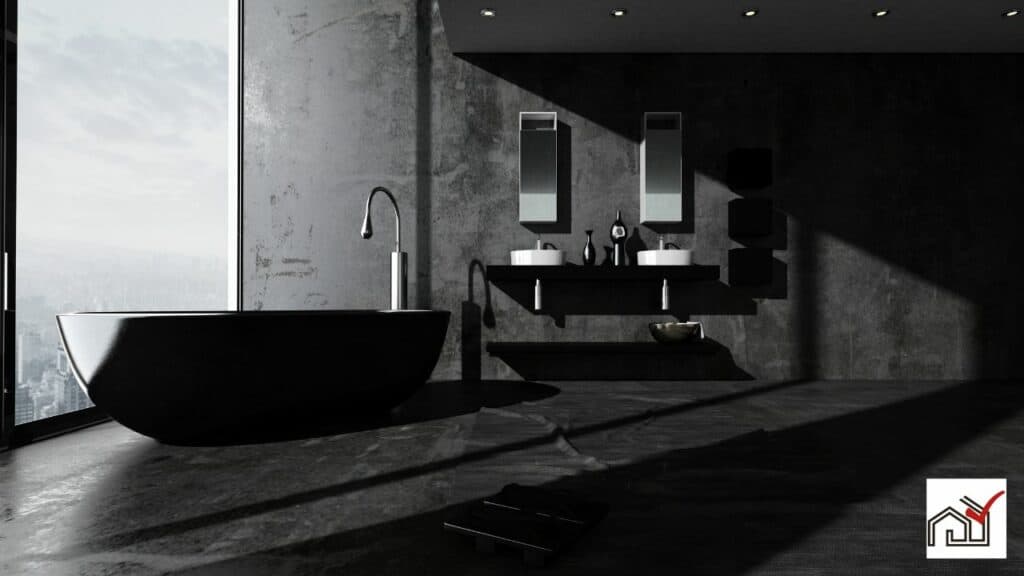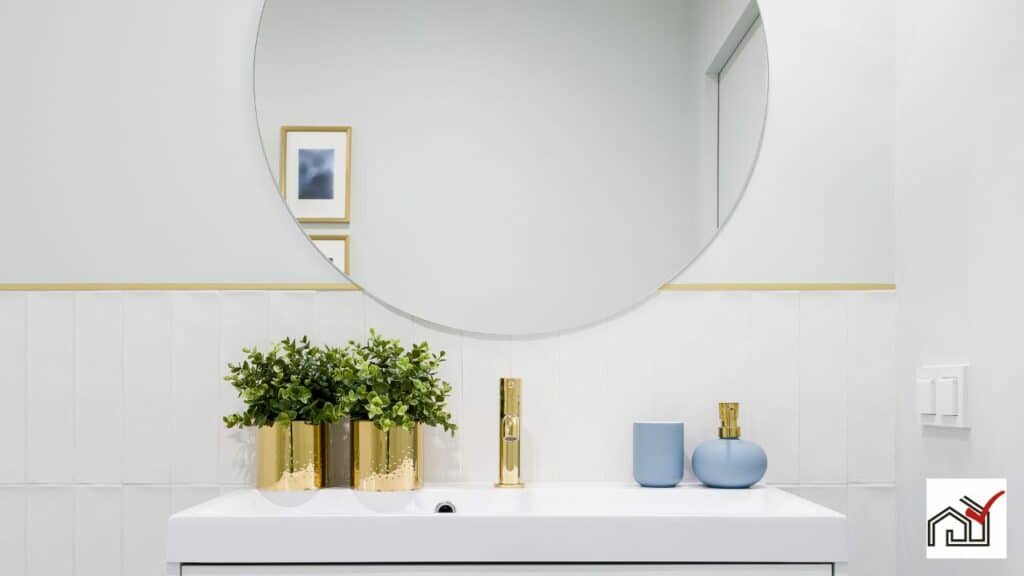Bathroom cabinets typically have a depth of 21 inches, not including countertop overhang. This size offers a balance between storage space and accessibility.
However, when choosing a cabinet, one should consider the size of the bathroom. Larger cabinets may restrict movement in small bathrooms, while smaller cabinets may provide less storage.
The type of sink and faucet can also affect the necessary cabinet depth. It's important to select a cabinet that fits the specific needs and layout of the bathroom.
Understanding Standard Cabinet Depths
The industry standard for bathroom cabinet depth is 21 inches. This size is from the front to the back of the cabinet box, excluding the countertop. It balances storage capacity and room clearance. Cabinets can vary in depth to suit different bathroom sizes and storage needs. For small bathrooms, vanities as narrow as 8 inches are available to save space.
The listed depth of a bathroom vanity usually does not include the countertop, which can add to the total depth. It's important to check the full dimensions, including the countertop, when considering shallower options like 18-inch deep vanities.
In choosing a bathroom vanity, consider the specific layout and storage needs of your bathroom to ensure functionality and style. Selecting the appropriate depth is key to maintaining a practical and visually appealing bathroom.
Factors Influencing Vanity Depth
The depth of a bathroom vanity is influenced by the bathroom's layout and the user's preferences. The standard vanity depth is about 21 inches, but this can be adjusted for different bathroom sizes and needs. Smaller bathrooms may benefit from vanities with less depth to save space and create the appearance of a larger area.
The vanity's depth includes the countertop overhang, which typically extends beyond the sink base cabinet. The overhang enhances the look and helps prevent water damage to the cabinetry. When determining the vanity's size, it's important to consider the overhang's contribution to the total depth.
The vanity depth should also allow for sufficient clearance for door openings and movement within the bathroom. A vanity that is too deep can block pathways and reduce functionality.
For custom requirements, homeowners can have vanities made to their desired dimensions, including depth, to fit their specific needs and style preferences. Custom vanities enable homeowners to achieve the right balance between functionality and design.
Maximizing Space With Cabinet Dimensions
Choosing the right bathroom cabinet size is important for space efficiency and functionality in small bathrooms. A standard vanity depth is 21 inches, which balances storage needs and keeps the space open. For smaller bathrooms, vanities can be as shallow as 8 inches to save space. It's important to consider the countertop overhang, as it adds to the cabinet's depth. Deep cabinets provide more storage but can make a small bathroom feel crowded.
For single sink vanities, the standard depth accommodates various styles and budgets. Double sink vanities also come in standard depths, suitable for shared bathrooms without taking up too much space. Homeowners should consider both depth and width when choosing bathroom cabinets to ensure they meet their needs without compromising on space or quality.
The aim is to find a cabinet size that balances functionality and the specific usage requirements of the bathroom.
Customizing Your Cabinet Measurements
Customizing cabinet sizes allows for a perfect fit and style in your bathroom. Standard bath vanity depth is 21 inches, not counting the countertop, which adds about an inch. For small bathrooms, choosing a vanity with less depth can make the room feel larger and look more contemporary.
Bathroom vanity depths can vary, with custom sizes going as shallow as 8 inches. Remember to include the countertop when measuring. A vanity that aligns with the room's fixtures offers a seamless look, often preferred in modern designs.
For larger spaces, vanities up to 72 or 78 inches wide are available. While you might pay around $400 for standard depth cabinets, shopping from online stores like Wayfair or Empire Industries provides 18-inch deep options. Alternatively, working with local artisans or kitchen designers can result in a more personalized size and design.
Custom cabinets ensure a balance of function and style unique to your needs.
Depth Considerations for Sink Types
The depth of a bathroom cabinet is important to consider when choosing a sink. Vessel sinks require more countertop space than drop-in or undermount sinks because they sit on top of the counter. Standard bathroom cabinets are typically 21 inches deep, not including countertop overhang.
Sink depth must allow for the sink to fit within the cabinet and leave room for plumbing at the back. Cabinets for vessel sinks may need to be deeper for stability and to look proportional. Drop-in and undermount sinks are less concerning for depth as they fit into the countertop cutout.
When choosing a vanity, ensure there is enough space for doors and drawers to function properly. This is crucial in small bathrooms to maximize space. Cabinet depth should be compatible with the sink type for both aesthetics and practicality in the bathroom.




